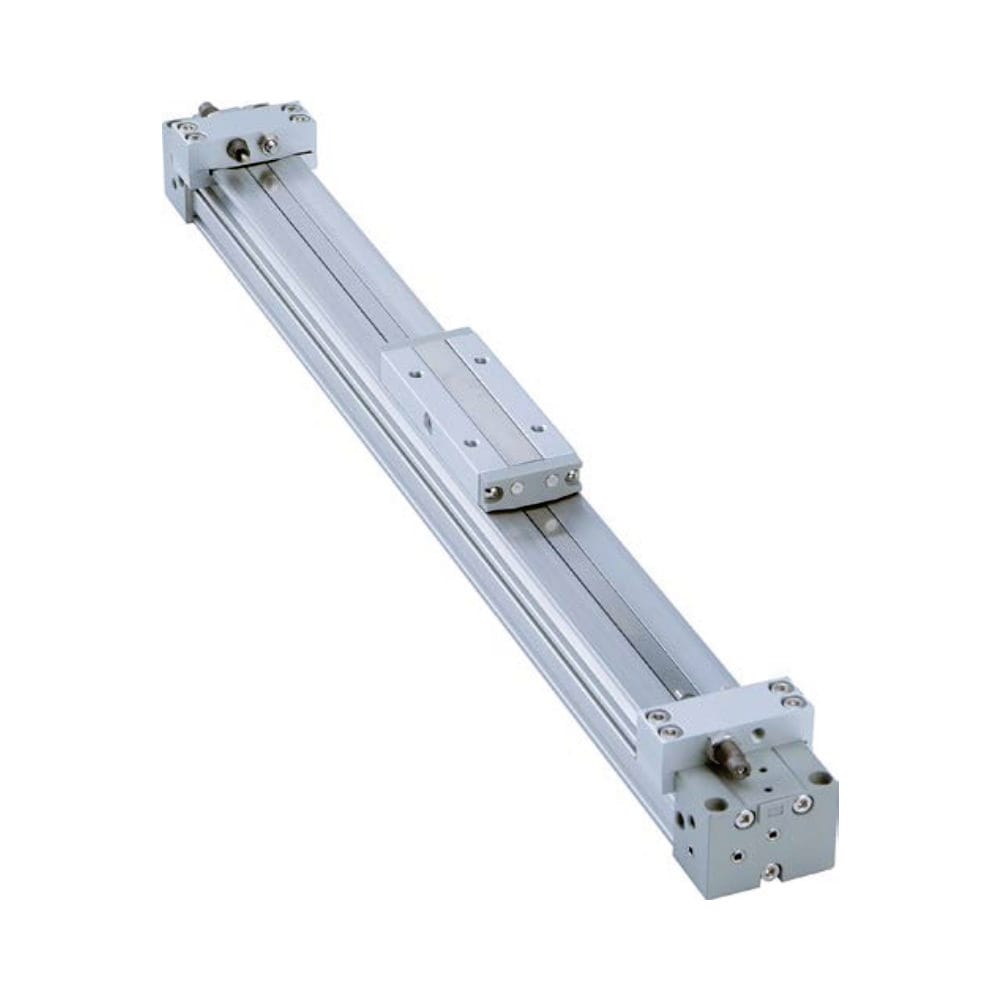Your pneumatic system is consuming excessive compressed air, cylinders are failing prematurely, and production efficiency is declining. The root cause often lies in improper pressure-to-load analysis, leading to oversized compressors and undersized cylinders. Accurate load analysis can slash your operating costs by up to 40%. 💰
Ustrezna analiza tlaka pnevmatskih valjev glede na obremenitev vključuje izračun teoretičnih potreb po sili, upoštevanje izgub učinkovitosti, dodajanje varnostnih faktorjev in izbiro optimalnih delovnih tlakov za povečanje zmogljivosti ob čim manjši porabi energije.
Last week, I consulted with Jennifer, a plant engineer at a Texas food processing facility, whose pneumatic costs had doubled over two years due to incorrect pressure-load calculations that were literally bleeding money through inefficient system design.
Kazalo vsebine
- How Do You Calculate Required Cylinder Pressure for Specific Loads?
- What Factors Affect Pneumatic Cylinder Efficiency Under Load?
- How Does Load Type Impact Pressure Requirements?
- When Should You Upgrade to Higher Pressure Systems?
How Do You Calculate Required Cylinder Pressure for Specific Loads?
Accurate pressure calculations form the foundation of efficient pneumatic design. 🔧
The basic formula is Pressure = Load ÷ (Cylinder Area × Efficiency Factor), but real-world applications require additional considerations for friction, acceleration, safety margins, and system losses.
Kalkulator teoretične sile cilindra
Izračunajte teoretično potisno in vlečno silo valja
Vhodni parametri
Teoretična sila
Postopek izračuna po korakih
Basic Force Requirements
At Bepto, we use this proven methodology:
- Theoretical Force: F = P × A (Pressure × Area)1
- Actual Force: F_actual = F_theoretical × Efficiency
- Required Pressure: P = F_required ÷ (A × Efficiency)
Efficiency Factors by Cylinder Type
| Vrsta cilindra | Tipična učinkovitost | Prednost zdravila Bepto |
|---|---|---|
| Standard Rod | 85-90% | 92-95% with premium seals |
| Brez palice | 80-85% | 88-92% optimized design |
| Težka naloga | 90-95% | 95-98% precision manufacturing |
Uporaba v resničnem svetu
Jennifer’s facility was using 150 PSI across all applications, but our analysis revealed:
- Light positioning: Only needed 60 PSI
- Medium clamping: Required 100 PSI
- Dvigovanje težkih bremen: Actually needed 180 PSI
Primer izračuna
For a 4-inch bore cylinder lifting 2,000 lbs:
- Cylinder area: 12.57 sq inches
- Efficiency factor: 0.90
- Required pressure: 2,000 ÷ (12.57 × 0.90) = 177 PSI
- Recommended operating: 200 PSI (safety margin)
What Factors Affect Pneumatic Cylinder Efficiency Under Load?
Multiple variables impact how efficiently your cylinders convert pressure into useful work. ⚡
Key efficiency factors include seal friction, internal leakage, mounting alignment, operating temperature, air quality, and load characteristics, with properly maintained systems achieving 90-95% efficiency.

Primary Efficiency Killers
Seal-Related Losses
- Friction drag2: 5-15% efficiency loss
- Notranje puščanje: 2-8% pressure loss
- Vpliv temperature: ±10% variation
Vprašanja načrtovanja sistema
- Neusklajenost3: Up to 20% efficiency loss
- Undersized supply lines: 10-25% pressure drop
- Poor air quality: 5-15% performance degradation
Strategije za optimizacijo učinkovitosti
When we upgraded Jennifer’s system, we focused on:
Immediate Improvements
- Premium tesnila: Reduced friction by 40%
- Ustrezna velikost: Eliminated pressure drops
- Alignment correction: Improved efficiency by 15%
Dolgoročne rešitve
- Preventivno vzdrževanje: Scheduled seal replacement
- Obdelava zraka: Filtration and lubrication systems
- Regulacija tlaka: Zone-specific pressure control
The result was a 35% reduction in compressed air consumption while improving cycle times by 20%.
How Does Load Type Impact Pressure Requirements?
Different load characteristics demand varying pressure strategies for optimal performance. 📊
Statične obremenitve4 require steady pressure maintenance, dynamic loads need pressure for acceleration, intermittent loads benefit from pressure regulation, and variable loads demand adaptive pressure control systems.
Load Classification and Pressure Impact
Static Load Applications
- Operacije vpenjanja: Constant pressure required
- Positioning systems: Moderate pressure, high precision
- Zahteve glede tlaka: Base calculation + 20% safety
Dynamic Load Applications
- Ravnanje z materialom: High acceleration forces
- Hitro pozicioniranje: Quick response needed
- Zahteve glede tlaka: Base + acceleration + 30% safety
Pressure vs Load Relationship Chart
| Vrsta obremenitve | Pressure Multiplier | Tipične aplikacije | Priporočilo Bepto |
|---|---|---|---|
| Statično držanje | 1.2x theoretical | Clamps, brakes | Standardno brez palice |
| Dynamic lifting | 1.5x theoretical | Hoists, elevators | Heavy-duty rodless |
| Hitro kolesarjenje | 1.8x theoretical | Pick & place | High-speed rodless |
| Spremenljive obremenitve | 2.0x theoretical | Multi-function | Servo-controlled |
Rezultati študije primera
After implementing load-specific pressure zones, Jennifer’s facility achieved:
- Varčevanje z energijo: 42% reduction in compressor runtime
- Izboljšanje učinkovitosti: 28% faster cycle times
- Zmanjšanje vzdrževanja: 55% fewer cylinder repairs
- Prihranki stroškov: $180,000 annually in operating expenses
When Should You Upgrade to Higher Pressure Systems?
Higher pressure systems offer advantages but require careful cost-benefit analysis. 🎯
Upgrade to higher pressure (150+ PSI) when you need compact cylinders, have space constraints, require rapid acceleration, or when energy costs justify the efficiency gains from smaller components.
High Pressure System Benefits
Prednosti delovanja
- Kompaktna zasnova: 40-60% smaller cylinders
- Hitrejši odziv: Reduced acceleration time
- Higher power density5: More force per unit size
Ekonomski vidiki
- Začetni stroški: 20-30% higher equipment cost
- Operating efficiency: 15-25% better energy utilization
- Vzdrževanje: Potentially higher due to increased stress
Upgrade Decision Matrix
Consider upgrading when:
Omejitve prostora
- Limited mounting space
- Weight restrictions
- Aesthetic requirements
Zahteve za delovanje
- High-speed operation needed
- Precise positioning required
- Rapid cycle times essential
Ekonomska utemeljitev
Our analysis for Jennifer showed:
- Equipment cost increase: $45,000
- Annual energy savings: $72,000
- Payback period: 7.5 months
- 10-year NPV: $580,000 positive
Bepto High-Pressure Solutions
Our rodless cylinders excel in high-pressure applications:
- Nazivni tlak: Up to 250 PSI standard
- Kompaktna zasnova: 50% prihranek prostora
- Zanesljivost: Extended life under high pressure
- Cost advantage: 30% less than OEM alternatives
Robert, a machine builder in Ohio, switched to our high-pressure rodless cylinders and reduced his machine footprint by 35% while improving performance, allowing him to win contracts he couldn’t bid on before.
Zaključek
Proper pneumatic cylinder pressure vs load analysis is essential for system efficiency, cost control, and reliable operation in modern industrial applications. 💪
FAQs About Pneumatic Cylinder Pressure vs Load Analysis
Q: What’s the most common mistake in pressure-load calculations?
Ignoring efficiency factors and safety margins, leading to undersized systems that struggle under real-world conditions and consume excessive energy trying to compensate.
Q: How often should I recalculate pressure requirements?
Review calculations annually or whenever loads change, as wear and system modifications can significantly impact actual pressure needs over time.
Q: Can I use the same pressure for all cylinders in my system?
No – different applications require different pressures. Zone-specific pressure regulation can reduce energy consumption by 30-50% compared to single-pressure systems.
Q: What pressure range is most efficient for pneumatic systems?
Most industrial applications operate efficiently between 80-120 PSI, with higher pressures justified only for specific performance or space requirements.
Q: How quickly can Bepto help optimize my pressure-load analysis?
We provide free system analysis within 48 hours and can ship optimized cylinder solutions within 24 hours, with most global deliveries completed in 2-3 business days.
-
See a technical breakdown of the fundamental force, pressure, and area (F=PA) formula. ↩
-
Explore how seal friction creates efficiency losses and affects cylinder performance. ↩
-
Learn how pneumatic cylinder misalignment can cause binding, wear, and significant efficiency loss. ↩
-
Understand the critical engineering differences between static and dynamic loads. ↩
-
Get a clear definition of power density and why it is a key metric in system design. ↩





